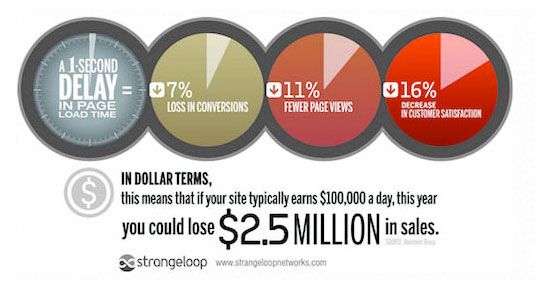Website speed plays a crucial role in attracting and engaging users. In today’s fast-paced digital world, user attention spans are shorter than ever. If a website takes too long to load, users are likely to abandon it and move on to another faster alternative. In this article, we will explore the importance of website speed and its impact on user engagement.
The Importance of Website Speed
Website speed refers to how quickly a website’s pages load and display content. It is influenced by various factors, including server performance, page size, and network conditions. Fast-loading websites provide a seamless user experience, enabling users to quickly find the information they seek while enjoying a smooth browsing experience.
Conversely, slow-loading websites frustrate users and lead to a higher bounce rate. Studies have shown that a vast majority of users expect a website to load within two seconds. If the website takes longer, users may lose interest, resulting in decreased engagement and potential loss of business opportunities.
Impact on User Engagement
Website speed has a direct impact on user engagement. When a website loads quickly, users are more likely to stay, explore, and interact with its content. On the other hand, a slow website can deter users and diminish their engagement levels. Let’s delve deeper into the specific areas where website speed affects user engagement:
Bounce Rate
Bounce rate refers to the percentage of users who visit a website and leave without further interaction. Research has shown that a 1-second delay in page load time can increase bounce rates by up to 32%. When users encounter slow-loading pages, they are more likely to lose interest and abandon the site. Optimizing website speed can significantly reduce bounce rates and retain users on the site for longer durations.
User Satisfaction
Users expect websites to be fast and responsive. Slow-loading pages create a negative user experience, leading to frustration and dissatisfaction. Users may perceive a slow website as a sign of poor quality or lack of professionalism. Conversely, fast-loading websites generate positive user experiences, enhancing overall satisfaction and driving higher engagement levels.
Conversion Rates
A fast website not only attracts users but also increases the chances of converting them into customers or performing desired actions. Studies have found that a 1-second improvement in website load time can boost conversion rates by 7%. When users can easily navigate a website and find what they need without delays, they are more likely to complete transactions and engage with the business further.
Search Engine Ranking
Website speed is a crucial ranking factor for search engines like Google. Search engines prioritize fast-loading websites to provide the best user experience to their users. A slow website can lead to lower search engine rankings, making it harder for users to discover the site in the first place. Therefore, optimizing website speed not only improves user engagement but also enhances visibility on search engine result pages.
Improving Website Speed
There are several strategies you can employ to improve your website’s speed and enhance user engagement:
Optimize Images
Images are often the largest elements on a web page. Compressing and resizing images can significantly reduce their file size, leading to faster page load times. Consider using image optimization tools or optimizing images manually to strike a balance between quality and size.
Minimize HTTP Requests
Every element on a webpage, such as images, scripts, and stylesheets, requires separate HTTP requests. Minimizing the number of these requests by combining files and reducing unnecessary elements can help speed up your website.
Caching
Implementing caching techniques allows web browsers to store static files, such as CSS and JavaScript, locally. This reduces the need for repeated downloads and speeds up subsequent visits to the website.
Content Delivery Networks (CDNs)
CDNs distribute website content across multiple servers worldwide, enabling faster delivery to users based on their geographical location. By reducing the physical distance between users and servers, CDNs can significantly enhance website speed and improve user engagement.
Regular Performance Monitoring
Keep a close eye on your website’s performance by regularly monitoring loading times, bounce rates, and other metrics. This will help you identify any potential issues and take necessary optimization measures.
Conclusion
Website speed is a critical factor in user engagement. A fast-loading website improves bounce rates, enhances user satisfaction, increases conversion rates, and improves search engine rankings. By implementing various optimization techniques, website owners can significantly improve their website’s speed and provide a seamless user experience, ultimately leading to increased user engagement and business success.


